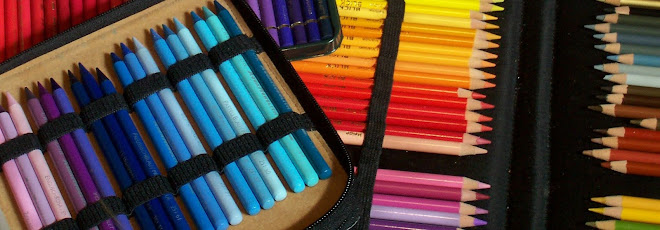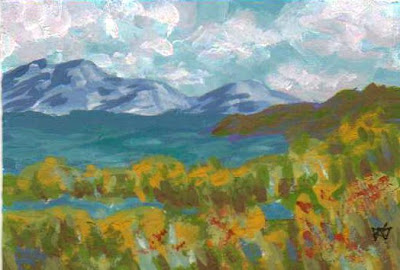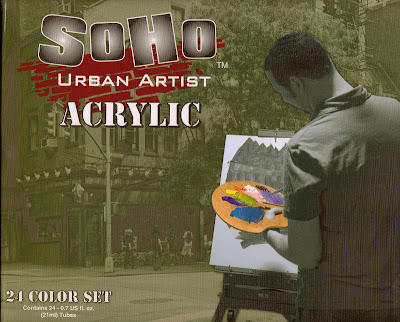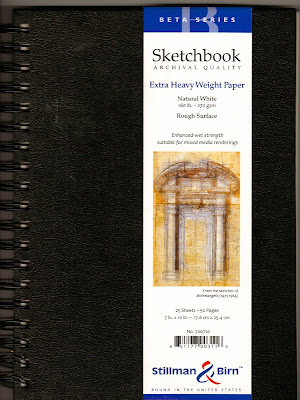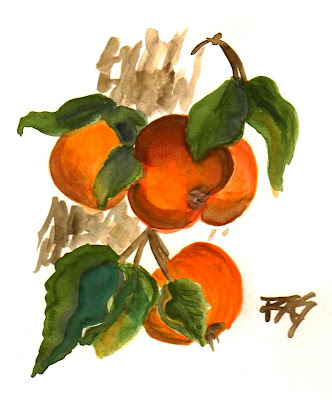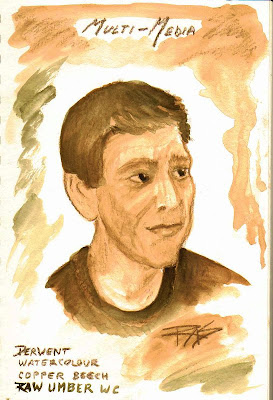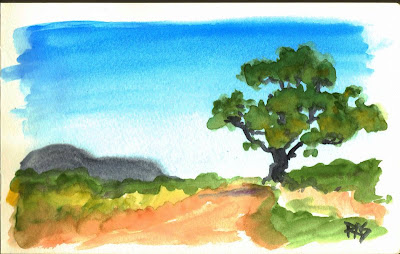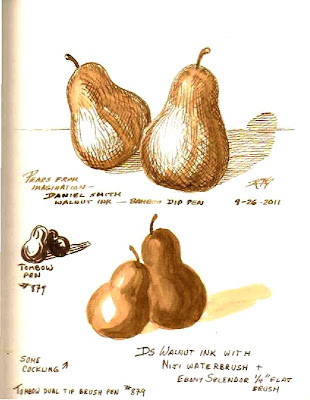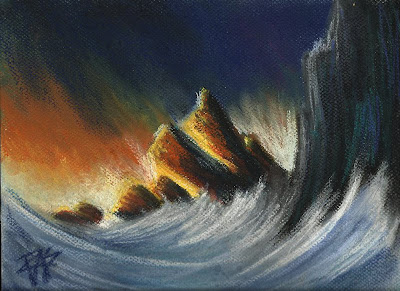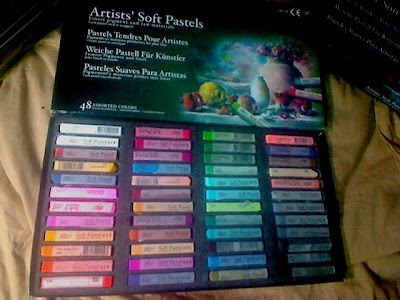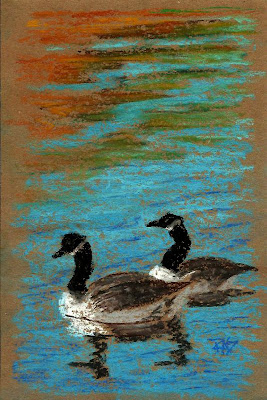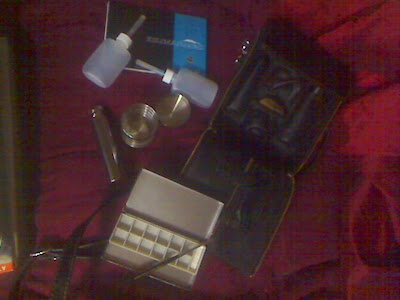Stillman & Birn's Gamma Series sketchbook is the fifth of the beautiful journals the company sent me to try. Available in several sizes with either a hard cover or a wirebound hard cover, the Gamma Series has 100lb ivory vellum archival paper. It's a very light ivory, not so dark that white strokes show up dramatically. The color gives a warm glow to anything drawn or painted on it and the heavy weight allows a variety of mixed media uses.
The paper is the same as the Stillman & Birn Alpha Series sketchbook, its only difference is the ivory color. So I decided to test it again thoroughly with different mediums. Seeing how the ivory paper affects color in sketches and trying out a couple of dry mediums I didn't use in the Alpha for my review seemed like a good idea.
I trusted that it'd handle dry mediums well enough when I reviewed the Alpha. What I didn't realize was how great the surface was with them, whether I want broken color or blended smooth color areas. This paper, in both the Alpha and Gamma versions, shines for everything I've used on it.
I love the texture on the Stillman & Birn Gamma paper for drawing with Conte. Here's a sketch done with the traditional sketching colors, black, bistre and sanguine. I worked loosely, smudged, skittered the sticks across the page and got excellent broken color from the vellum surface. It's versatile. Not so toothy that I can't get soft blended edges or even use penwork, yet rough enough that broken color is easy.
I used SpectraFix casein fixative on this page. It's a good idea to use fixative on colored pencils paintings or drawings to prevent wax bloom. With pastels, pastel pencils or Conte drawings, even soft graphite drawings, fixative helps keep them from smearing on the facing page. At worst, smears on the facing page migrate into light areas of the drawing facing it.
For permanent storage, the hard cover Stillman & Birn Gamma sketchbook fits neatly on any bookcase and looks classy with its plain black binding. This is the type of bound sketchbook that gives an art journal a sense of special formality. I know in the past I was nervous about using hardbound sketchbooks at all for fear of messing up a page when it's so elegant.
Don't be afraid to experiment in the Gamma sketchbook. The strong Gamma paper stands up well to erasing and reworking for any dry medium. Any pages you're not satisfied with can always be reworked later or dated to show your progress.
One thing I like about the size is that the 8 1/2" x 11" Gamma sketchbook fits on a normal scanner unlike any of the 9" x 12" ones. That size range varies, but having a scanner sized sketchbook makes it much easier to post your pages online. If you don't have a camera tripod, it can be hard to snap photos of artwork without blurring. So having scanner sized pages makes it a lot easier to keep a digital record in case my sketchbooks are damaged by a flood or lost in a move.
Below is an oil pastel still life in my hardbound Stillman & Birn Gamma sketchbook. Oil pastels are a little different. Unlike Conte crayons, colored pencils or other dry mediums, they have mineral oils in them that never completely dry. Sometimes these oils can seep through sketchbook paper to appear on the reverse.
The strong paper with its sizing kept the oils in my oil pastels page from coming through at all. I could use watercolors on the reverse of this page with no problem. That's important to me because oil pastel is one of my favorite sketch mediums as well as a serious painting medium.
Because the hard covers are light proof, I can even use cheap student oil pastels in my sketchbook without worrying about fading. So I'm always on the lookout for papers that take them well. They're a portable, convenient color medium for studies in their cheapest form and it's a lot of fun to experiment, trusting that the paper will stand up to my experiments.
So if this paper stands up well to oil pastels and Conte crayons, I trust it'll be fine with colored pencils. It's toothy and should take some serious layering if you want to play with your Prismacolors on it. Stick to light applications till your final blending if you want to maximize layering though
Naturally I wanted to see how the Gamma paper holds up to light washes. Except that my example wasn't a light wash by the time I was done with it. I'd call it a heavy wash. I used Stabilo Point 88 fine tip watersoluble pens in a color set that came with my Carb-Othello pastel pencils.
Once I'd sketched the scene using half a dozen colors, I started washing by color area and pushing color around. I scrubbed hard in some areas to almost completely dissolve my pen lines, leaving only faint echoes if that. I dabbed color into damp areas from darker areas for wet in wet effects. What happened was some very slight curling at the edge when it was completely soggy and finished. That flattened out as it dried and the scanner finished flattening it to minimal.
This paper stands up to wet techniques and mixed media so well that I won't hesitate to use watersoluble pencils, watercolor sketching or any water media in it. The label says "light washes" but it stands up to some heavy washing too with minimal cockles. My main suggestion is to leave a bit of space between the edge of your painting and the edge of the paper if you're going to get really soggy, unlike what I just did. I'd rather have left about an inch but by then I had to keep going to get the composition right.
Stillman & Birn Gamma paper will put up with mistakes like that and come back strong. I'm happy with this beautiful sketchbook and know that I'll definitely replace it when it's full - these are a joy to work in and an inducement to sketch and paint more often.
